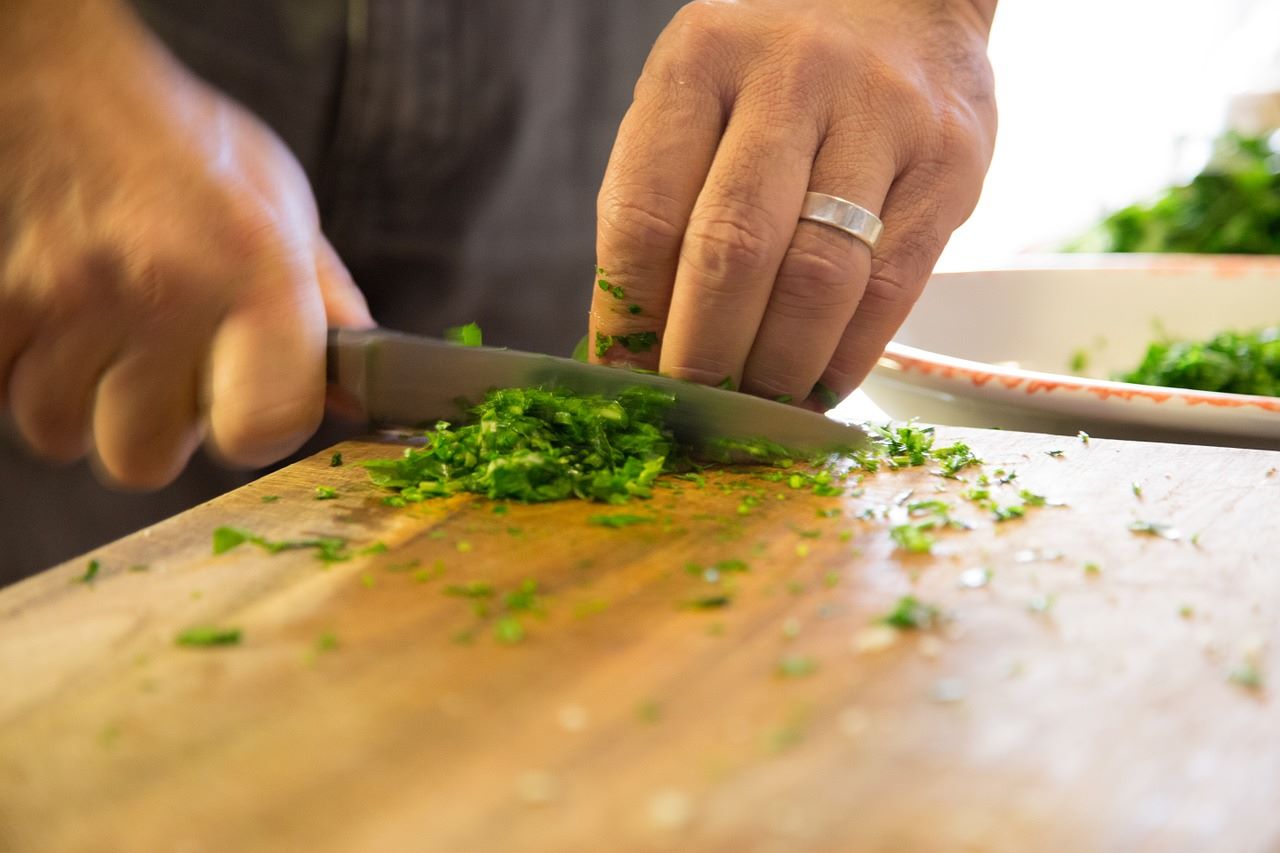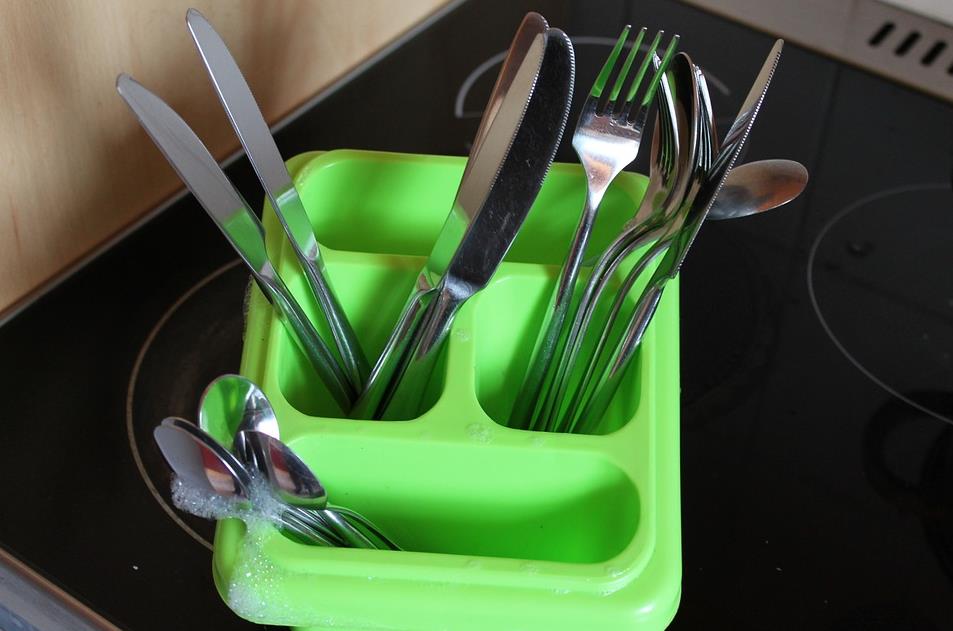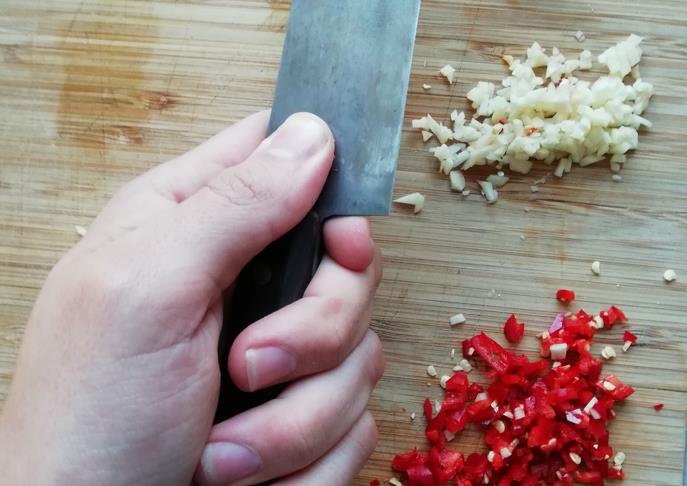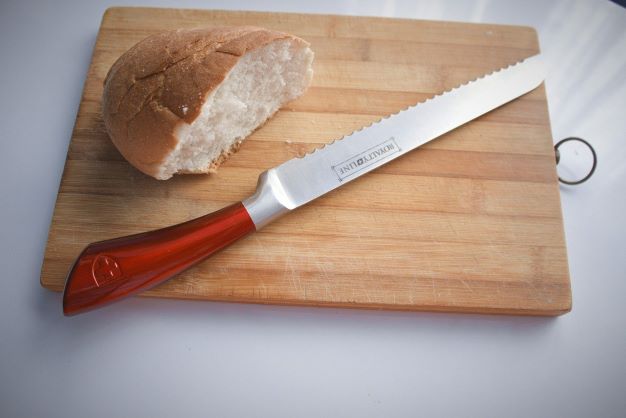You’ve probably bought some handy knives from one of your favorite knife brands, only to discover their razor-sharpness gone in the midst of one of your Thanksgiving meal-preps. You search for a knife sharpener but wait, you remember you don’t have one.
If you want to avoid such cutlery disasters, you need to master the art of learning how to sharpen a knife without a knife sharpener. Not only will it save you from a dull knife that can be potentially dangerous, but allow you to sharpen it in the kitchen, in the wilderness, and all places in between.
You can learn how to sharpen a knife without a sharpener by using some everyday household items at your disposal. Everyday items such as coffee mugs, leather belts and nail files can act as great knife sharpeners. The main trick is to use friction for removing metal filings from the knife and achieve a fine knife edge.
We will be discussing these easy DIYs in greater detail below so that you can learn how to sharpen a knife without a sharpener like a pro.
Table of contents
Methods of sharpening your knives at home (with steps)

The basic premise of sharpening a knife is simple whether you do it with a sharpening stone or any of the other everyday items we have discussed below. Begin by positioning the knife blade at a 10-20 degree angle to the sharpening surface. Run the knife against the blade while maintaining the angle.
Cutting angles depend on the type of knife you are using. Lower cutting angles are required by knives such as a chef’s knife, while pocket knives and other outdoor knives require larger cutting angles of about 15-20 degrees.
We have compiled the following list of everyday items that you can use as knife sharpening substitutes:
Method 1: ceramic mug

Ceramic coffee mugs are a great way to sharpen your knife. This is because they have a material that is hard and coarse, allowing you to achieve a sharp edge. This trick will, however, only work if your mug has a raw edge on the bottom.
- Turn your ceramic mug upside down and place it on an even surface.
- Search for the raw edge at the bottom of your cup.
- Begin by running the knife against the ceramic mug at a 10 degree angle to the mug.
- Repeat by running the knife in the same direction.
- Once you reach your desired level of sharpness, flip your knife and repeat on the other side of the knife.
You will know that your knife sharpening trick is working if you see some discoloration on the mug. As mentioned earlier, in case your mug has a smooth and polished surface at the bottom, the knife sharpening process won’t work.
Method 2: car window

Our next DIY on how to sharpen without a knife sharpener is by using a car window! Surprisingly, car windows can act as great honing devices since they have a coarse, rounded edge. Follow the steps below to achieve a sharp knife by using car window as a knife sharpener:
- Roll your car window halfway downwards.
- Run your blade against the rough edge of the window steadily.
- Repeat the process on both sides of the knife for about 8-10 times.
You must know, however, that car windows act similar to a honing steel. Broken glass windows can be used similarly. They do not actually sharpen a knife, rather hone them by aligning the blade edge to its prior position. You can learn more about the differences between sharpening and honing here.
Method 3: nail file
Another way you can sharpen a knife without a knife sharpener is by using a nail filer. Nail filers are made out of steel, having coarse surfaces that make them great knife sharpening substitutes:
- Place the nail file down on a flat surface with the rough side upwards.
- Position the knife edge at a 10 degree angle to the nail file.
- Run the entire length of the knife against the tool; whilst maintaining a consistent angle.
- Once sharpened to desired level, flip and repeat on the knife’s other side.
If you don’t have a metal nail file with a coarse exterior, a nail file with sandpaper will work just as well. The coarse surface will allow you to sharpen the knife to your desired level.
Method 4: slate

The closest thing you can find to a whetstone, one of the best sharpening tools, is a slate. A slate is used to sharpen knives by mimicking the same movements and techniques that are used when using whetstones. These materials offer rough exteriors to sharpen knives effectively.
Here are the steps to use slate as a sharpening tool:
- Soak your slate in water.
- Position your knife at a 10 degrees angle from the slate.
- Run the knife blade against the slate at a consistent sharpening angle across its entire length.
- Repeat until desired sharpening edge is achieved and then flip to do the other side.
Method 5: another knife

In our next DIY on how to sharpen a knife without a knife sharpener, we are going to talk about using knives as sharpening tools. Indeed, you can sharpen a dull knife with a sharp knife, provided the steel of the sharp knife is harder.
Here are the steps you can follow to sharpen a knife with another one:
- Position the back of the blade of the harder steel for sharpening.
- Pull the knife that needs sharpening over the blade of harder steel.
- Repeat several times.
Disclaimer: if you have a knife that is extremely dull, this method might not work as no metal filings would be able to be removed. Also, don’t go rubbing about the edges against each other. Otherwise, you’ll end up ruining both of your knives.
Method 6: leather belt
If your knife is somewhere in the middle of razor sharp and extremely dull, you might want to consider stropping your knife. Stropping is basically the final touch you make to sharpen your knife, by way of removing microscopic inconsistencies in your knife to allow a razor-sharp finish.
Here are the steps you can use to strop your knife:
- Hold the leather belt in one hand, preferably the non-dominant one.
- Position your knife at an angle of 10 degrees to the belt.
- Using your dominant hand, run the knife across the leather belt.
- The knife edge should be moving away from the belt.
- Repeat till honed.
Using a leather belt can allow you to have a sharp knife edge by means of stropping. Make sure, however, that you don’t push into the belt otherwise you might end up cutting it.
Method 7: concrete

When on the road and without a car window at your disposal, roads can be your life saviors. Most roads today are made out of concrete, and their coarse and hard exteriors will make for good knife sharpening tools. Here is what you need to do:
- Get down on the road.
- Pour some water on a patch that is clean.
- Begin by stroking your dull knife against the concrete.
- Repeat till honed.
Concrete roads can be used to sharpen knives in situations that are not so ideal. They might not sharpen them like a pro, but will certainly eliminate the dullness in your knife.
Handpicked for you
True cutting power in the palm of your hand
Method 8: cardboard

Another surprising household item that you can use when learning how to sharpen without a sharpener is cardboard. Surprisingly, cardboards act as good knife honing tools similar to leather belts. Follow the steps below to hone your knife with a cardboard:
- Position the cardboard on a flat surface.
- Place your knife at a 10 degree angle to the cardboard.
- Run the knife blade in a backward motion against the cardboard, maintaining a consistent angle.
- Repeat several times and flip to do the other side.
Cardboard is best suited for honing purposes. So if you’ve got some cardboard boxes from Amazon lying around, put them to good use.
Method 9: sandpaper
Sandpaper is good for sharpening knives due to the coarse exterior it has to offer. Also, it provides the right grit that you need to sharpen your knives to your desired level. Don’t rub the sandpaper on the knife though, or you’ll risk cutting yourself. Instead, follow the steps below:
- Fold a piece of sandpaper to form a rectangular block.
- Alternatively, you can place the sandpaper on a wooden block.
- Place the sandpaper on a flat surface.
- Hold the knife in your dominant hand at a 10 degree angle to the sandpaper.
- Hold the sandpaper in your non-dominant hand in place.
- Begin by stroking the knife against the sandpaper at a consistent angle.
- Make sure you run the knife blade across its entire length.
- Repeat till desired.
- Flip to do the other side and sharpen both sides equally.
When working with sandpaper, however, make sure that the grit of the sandpaper is not too coarse, otherwise you’ll risk losing too much metal.
Method 10: shovel

By now, you know the drill. Materials that are coarse and hard can act as good knife sharpening substitutes. Learning how to sharpen a knife without a knife sharpener involves learning to use this wacky tool. Not only does a shovel have a coarse surface, but it is also thin. Therefore, it can act as a good honing tool.
Follow the steps below to sharpen a knife without a sharpener, using a shovel instead:
- Similar to a honing rod, begin by holding the shovel vertically.
- Hold the dull knife in your dominant hand.
- Place the knife at the footrest of the shovel, which is the thick part of the blade’s top edge.
- At a 10 degree angle, begin stroking the knife.
- Run the strokes along the top edge of the shovel’s blade.
- Make sure you cover the entire length of the blade, as you maintain a consistent angle.
- Flip the knife and repeat on the other side.
- Sharpen both sides equally.
Now that you have learned the many ways of sharpening your dull knife without a proper knife sharpener, you can easily sharpen in case of emergencies. Get down to your knife sharpening business straight away.
How to prevent your knife from getting dull easily
Knives are important tools in the kitchen, helping you slice those perfect cuts. In order to avoid your knife blades from getting dull too soon, here are some tips and tricks you can follow:
Cut on the right surface

Cutting on the right surface makes all the difference for knives. This is because hard and metallic surfaces such as aluminum, granite, and steel tend to dull them too soon. Cutting boards made out of wood are best, since their density and heaviness allow knives to slice on them steadily and safely.
Wash by hand
If you’re cleaning your kitchen knives in the dishwasher or putting them in the sink, you are deliberately giving them a slow death. This is because the hot water and harsh detergent tend to do more harm than good to kitchen knives.
Washing by hand is the best option, helping you retain your knife’s sharpness longer. For best results, wash by hand and dry immediately.
Store them properly

We see kitchen knives floating here and there in the drawer along with other utensils, another culprit that gets your knife dull too soon. The proper way to store a knife is by using wooden knife blocks, or as most chefs like to do it, on magnetic strips by the kitchen wall.
If these options aren’t available or feasible especially if you have kids or pets at home, simply dedicate a full drawer for storing your kitchen knives. At the least, store them in plastic blade protectors to avoid getting dents and scratches on them.
Hone, hone, and hone
When you hone your knife, you are maintaining its edge sharpness by knocking it back in its place. Honing your knife often will allow the knife edge to remain intact longer, so that you don’t have to sharpen it more often.
It’s probably best if you hone your knife after each use. This way, your blade edge will realign and allow you to make precise cuts each time.
Sporting the right grip

The right grip is important to maintaining your kitchen knives longer. The most common grip that you can sport is the pinch grip, where the knife is held by the handle and the top of the blade is pinched using your thumb and index finger.
This grip isn’t feasible for all sorts of cuts though. However, just make sure you don’t grip it as if trying to hand shake with your knife.
Using your knife for its intended purpose

We know you’ve been using your knife for opening cans, as a screwdriver, and even as a box cutter. Other than that, you may be using your bread knife to cut through cheese, or your paring knife as a chef knife or vice versa.
To avoid getting your knife dull too soon, you need to stop making these mistakes. Using knives for their intended purposes only will allow them to last longer, as well as save you the trouble of sharpening them over and over again.
Proper sharpening technique
Another important thing to remember is that your knives will get a lot less dull if you sharpen them right the first time. What makes one perfect when it comes to knife sharpening, is practice. A 20-degree angle is not a must when sharpening knives, but maintaining a consistent angle is.
Last but not the least, remember that properly sharpening your knife with the right sharpening tools is very important.
Importance of sharpening your knife with the right tools
Sharp knives are happy knives. Happy knives allow you to make finer and more precise cuts and help in transforming your culinary experience overall. Even though we have elaborated ways of how to sharpen a knife without a sharpener, using proper tools for sharpening gives you the best results.
This is why you must invest in a good knife sharpening tool, choosing between a handheld sharpener, an electric sharpener, or a sharpening stone. You will find more details about these proper knife sharpening tools in our articles dedicated to knife sharpening.
Lastly, a honing rod must also be kept at your disposal, since you need to hone your knife preferably after each use. Now that you know all about the different ways of sharpening knives, pull out your dull knives and sharpen away! Or, if you are thinking of buying a new knife, check out our collection of hand-forged knives at HDMD. Happy knife shopping.












